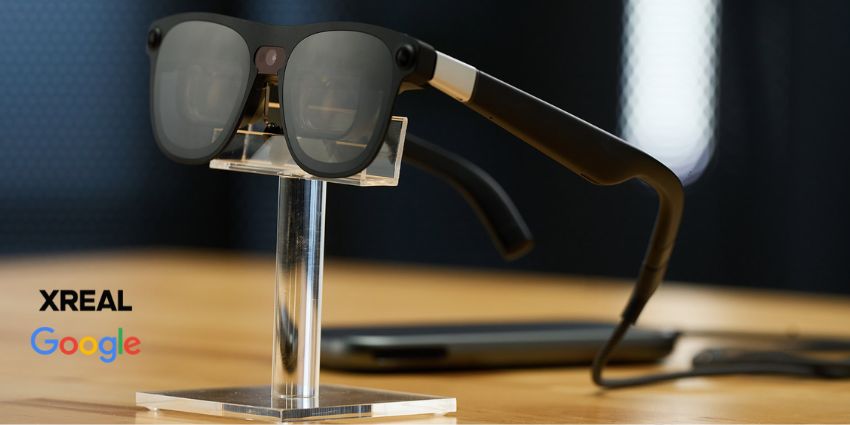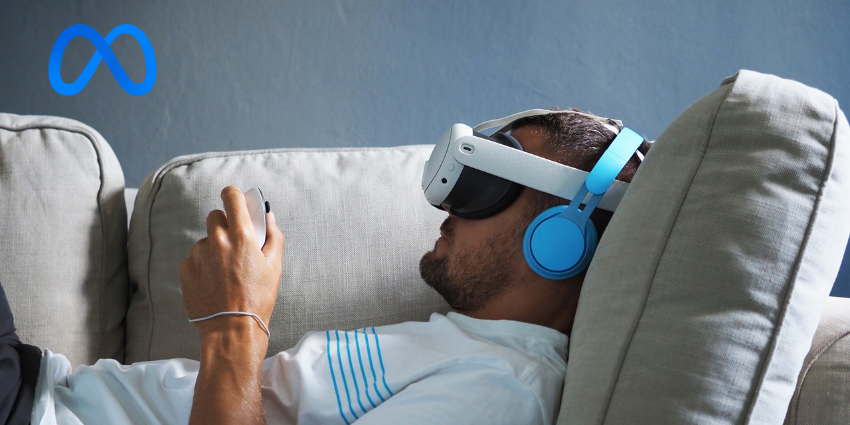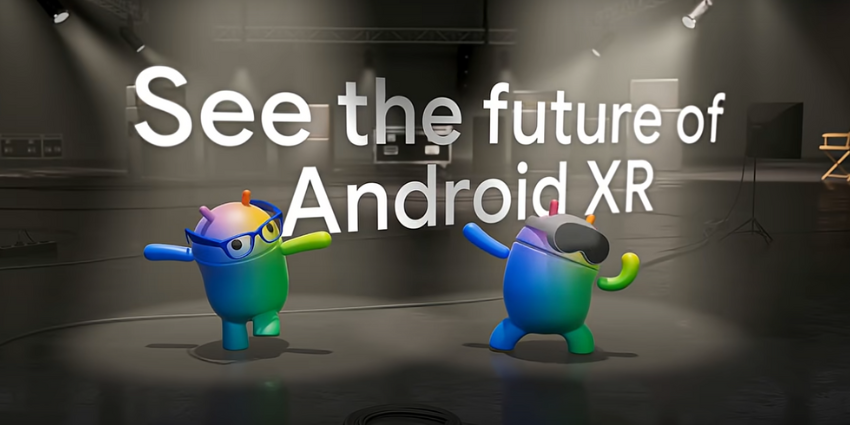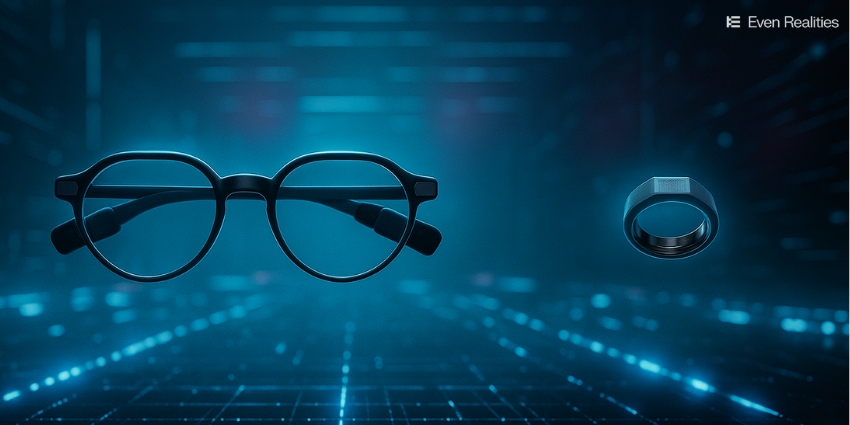Google’s $150M Power Play: How the Warby Parker Partnership Could Reshape Enterprise XR Forever
As someone deeply fascinated by how immersive technology transforms the workplace, I believe we’re witnessing a pivotal moment in the smart glasses revolution. If you’re an innovation leader, enterprise decision-maker, or XR industry professional, Google’s massive $150 million commitment to develop AI glasses with Warby Parker isn’t just news—it’s a strategic earthquake that could fundamentally alter the competitive landscape. This partnership signals that the battle for workplace XR dominance is about to intensify dramatically.
The Strategic Masterstroke Behind Google’s Massive Investment
Google’s announcement at Google I/O 2025 reveals a calculated approach to smart glasses development that directly challenges Meta’s Ray-Ban partnership model. The tech giant has already committed $75 million to Warby Parker’s product development and commercialization costs, with an additional $75 million investment planned based on milestone achievements, including taking an equity stake in the eyewear manufacturer.
“Google seems to be taking a page out of Meta’s smart glasses strategy. Meta has found success partnering and investing in the Ray-Ban maker EssilorLuxottica to develop its smart glasses.”
Said Maxwell Zeff, senior reporter at TechCrunch.
This isn’t merely about hardware development—it’s about ecosystem control and enterprise market positioning. By partnering with Warby Parker, Google gains access to established retail channels, popular frame designs, and most importantly, a brand trusted by millions of consumers who could become enterprise users.
Why This Partnership Matters for Enterprise XR Adoption
The implications for workplace technology adoption are profound. Unlike Meta’s consumer-focused Ray-Ban collaboration, Google’s Android XR platform combined with Warby Parker’s business-friendly aesthetic creates a compelling proposition for enterprise buyers. The partnership addresses three critical enterprise concerns: professional appearance, ecosystem integration, and scalable deployment.
Enterprise leaders have consistently cited aesthetics and professional acceptability as barriers to workplace XR adoption. Warby Parker’s reputation for stylish, workplace-appropriate eyewear directly addresses these concerns. When your smart glasses look like premium prescription frames rather than obvious tech devices, employee adoption rates increase significantly.
The Multimodal AI Advantage in Professional Environments
The integration of Gemini AI capabilities with prescription and non-prescription glasses represents a significant advancement in workplace productivity tools. Imagine attending meetings where your glasses provide real-time language translation, display contextual information about participants, or offer AI-powered insights during presentations. These aren’t futuristic concepts—they’re practical applications that address real workplace challenges.
The multimodal AI functionality could transform how professionals interact with information throughout their workday. From architects visualizing building modifications to sales teams accessing customer data during presentations, the practical applications for enterprise users are limitless.
The Eyewear Empire Battle: Understanding the Competitive Landscape
To fully grasp the significance of Google’s Warby Parker partnership, we must understand the broader eyewear industry dynamics. Warby Parker’s biggest competitor is Luxottica Group (now EssilorLuxottica following the 2018 merger), the Italian eyewear giant that dominates the global market with an estimated 80% market share.
EssilorLuxottica’s Smart Glasses Arsenal:
The eyewear behemoth controls an impressive portfolio of premium brands that have become the foundation for smart glasses development:
- Ray-Ban (Meta’s chosen partner for Ray-Ban Meta glasses)
- Oakley (popular in sports and enterprise applications)
- Persol (luxury Italian craftsmanship)
- Oliver Peoples (high-end fashion frames)
- Vogue Eyewear (fashion-forward designs)
Warby Parker’s Challenger Ecosystem:
As a direct-to-consumer disruptor, Warby Parker has built its reputation on:
- Affordable luxury positioning ($95-$195 price range vs. traditional $300+ frames)
- Home try-on programs that revolutionized online eyewear shopping
- Socially conscious business model (Buy a Pair, Give a Pair program)
- Millennial and Gen Z appeal through digital-first marketing
This competitive dynamic makes Google’s choice particularly strategic. While Meta partnered with the established market leader, Google is betting on the challenger brand that appeals to younger, tech-savvy professionals—exactly the demographic driving enterprise XR adoption.
Strategic Implications for the XR Industry Landscape
Google’s broader partnership strategy, including collaborations with Samsung and Gentle Monster, suggests a comprehensive approach to market penetration. This multi-partner strategy contrasts sharply with Meta’s singular focus on EssilorLuxottica, potentially giving Google greater flexibility and market reach.
The choice between Warby Parker and Luxottica brands represents two fundamentally different approaches to enterprise market penetration. Meta’s Ray-Ban partnership leverages established luxury and recognition, while Google’s Warby Parker alliance emphasizes accessibility, innovation, and digital-native appeal.
For XR industry professionals, this development signals several important trends. First, the smart glasses market is rapidly maturing beyond early adopter phases. Second, major tech companies are making substantial financial commitments to establish market position. Third, the integration of AI capabilities is becoming the primary differentiator rather than basic AR functionality.
Competitive Positioning and Market Dynamics
The timing of this announcement, coupled with Google’s Android XR platform launch, positions the company as a serious competitor to Meta’s Reality Labs division. While Meta has achieved success with Ray-Ban Meta glasses, Google’s approach suggests a more enterprise-focused strategy that could capture significant market share in professional environments.
Enterprise buyers should note that Google’s partnership model provides more choice and potentially better integration with existing Google Workspace tools. This ecosystem advantage could prove decisive for organizations already invested in Google’s productivity suite.
Ponder This..
The smart glasses revolution isn’t coming—it’s here, and Google’s $150 million commitment to Warby Parker proves that the enterprise market is where the real battle will be won. As we stand on the brink of mainstream XR adoption in professional environments, this partnership could be the catalyst that transforms smart glasses from novelty to necessity. The question isn’t whether your workplace will adopt XR technology, but which ecosystem will power your digital transformation journey.
Ready to dive deeper into the XR revolution? Join our thriving community of 2000+ XR professionals on LinkedIn to continue this conversation and explore how immersive technology is reshaping the workplace. Don’t miss the latest developments—subscribe to our newsletter for your weekly rundown of the most crucial XR industry news and insights.







